Introduction to the keyword research tools
In this article, you can learn how SEO.AI's keyword tools can help you find valuable keywords for your SEO strategy.
The 4 keyword research tools
SEO.AI has four powerful SEO tools that help you find and plan valuable keywords:
- AI keywords
- Matching terms
- Audience keywords
- Search volume
Here are tips on how to use each tool:
1. AI keywords
The AI Keywords tool combines classic keyword research with the power of AI to give you relevant suggestions for your seed keyword or prompt.
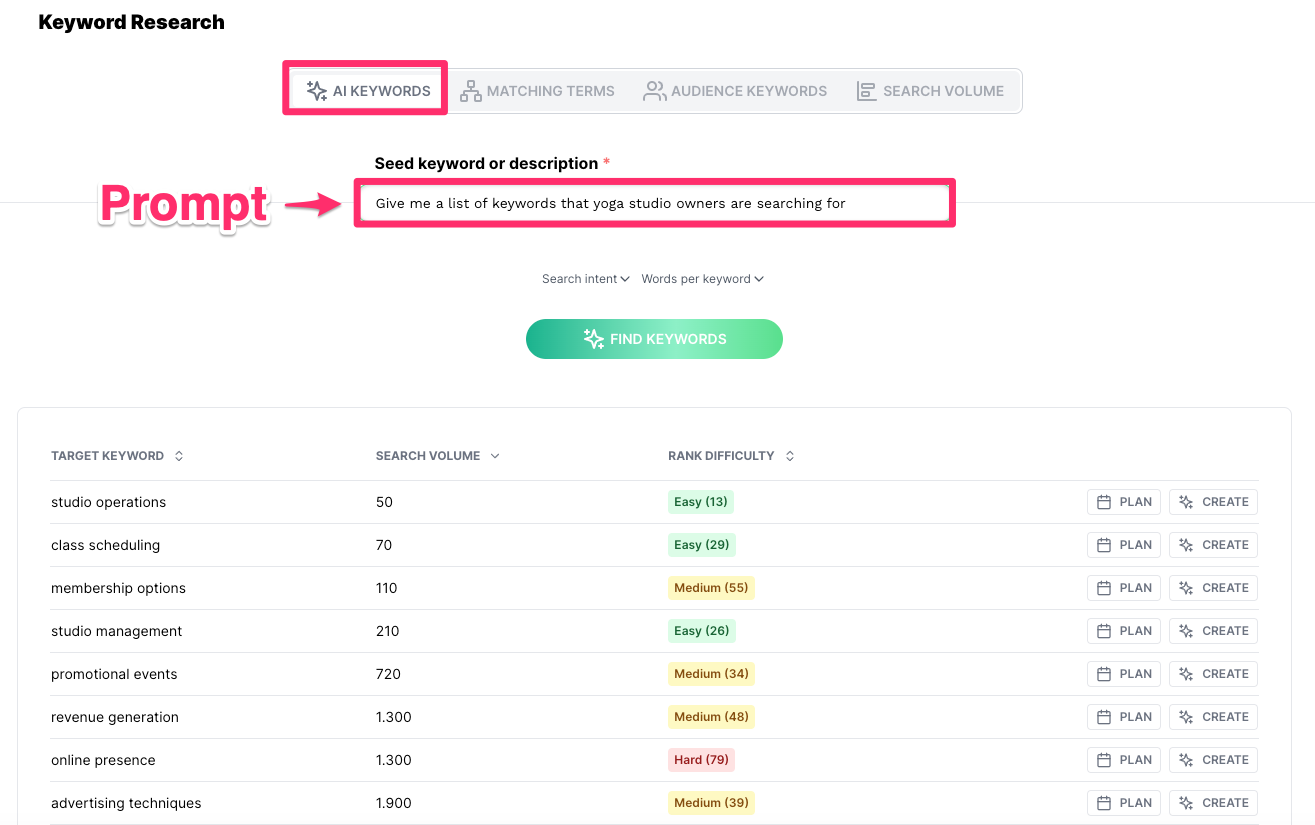
Example of prompts:
- "Mexican cuisine"
- "Give me a list of keywords that yoga studio owners are searching for"
- "Which keywords are relevant for new entrepreneurs?"
2. Matching Terms
Matching Terms is a tool that helps you find matching keywords that all contain your seed keyword. For example, by entering your seed keyword 'Yoga', the tool will provide you with a top list of longtail keywords that all contain 'Yoga'.
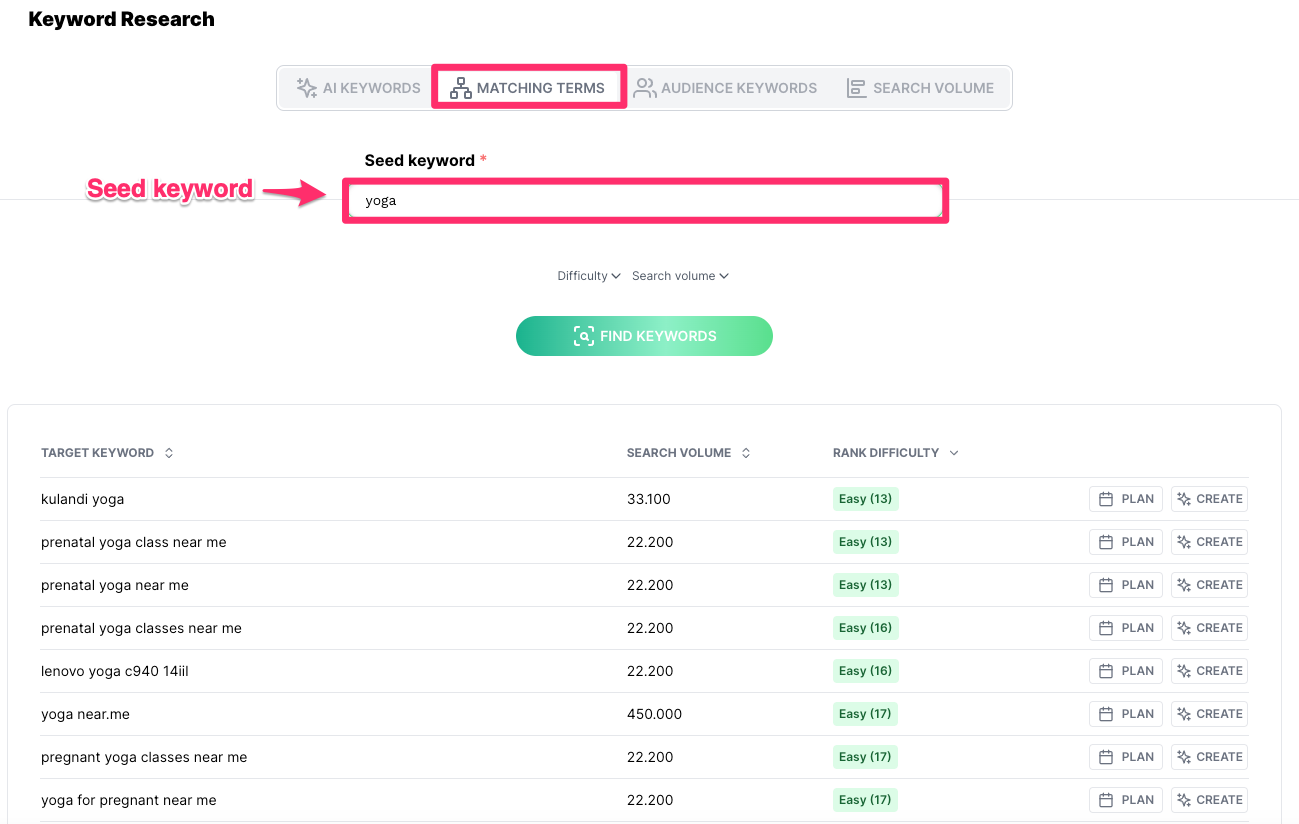
3. Audience Keywords
The first step in using the Audience Keywords function is defining the "seed keyword" and “target audience.”
The seed keyword could, for example, be 'yoga', and the audience could be 'people looking to improve their physical health and fitness'. You have the option to change both the seed keyword and target audience to your preference:
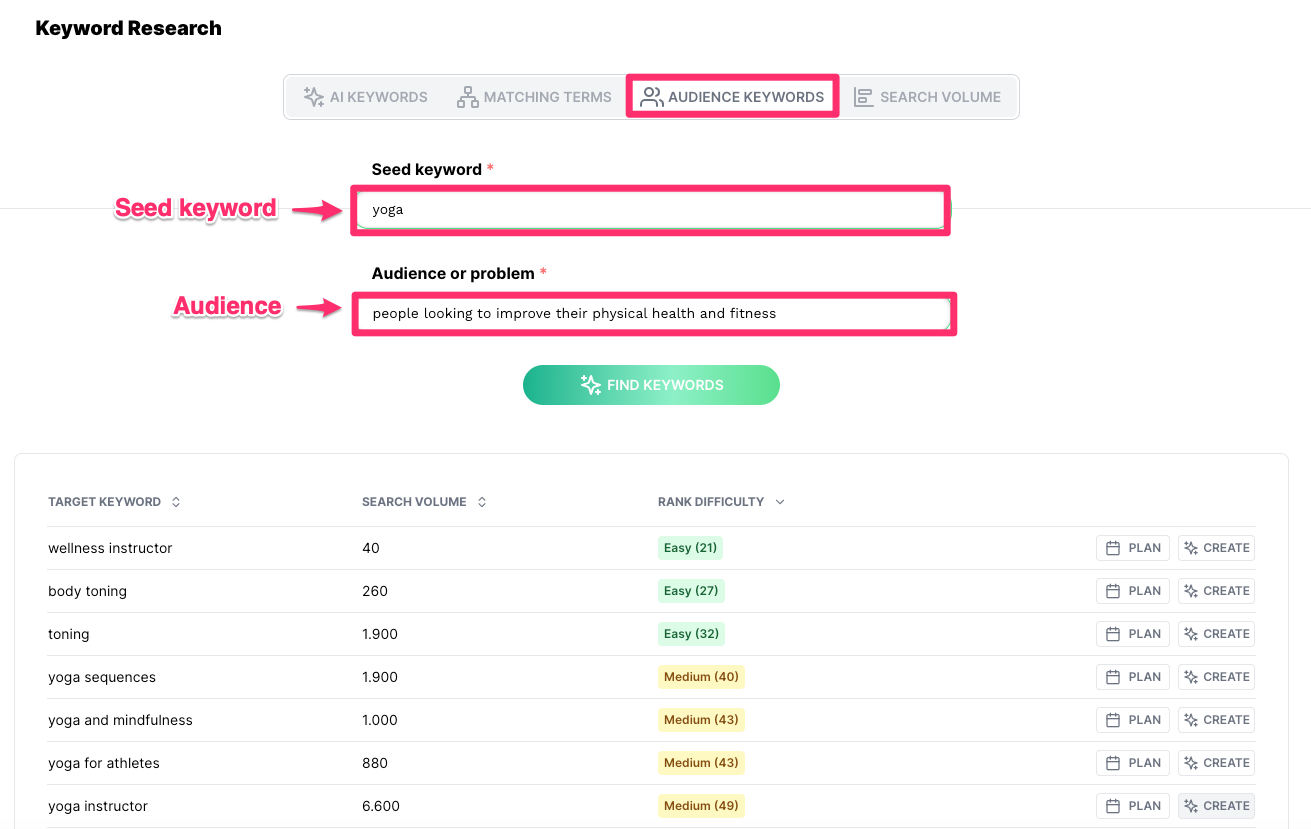
4. Search volume
Simply provide a list of keywords, one keyword per line, click on “Find search volume,” and get the average monthly search volume based on data from Google.
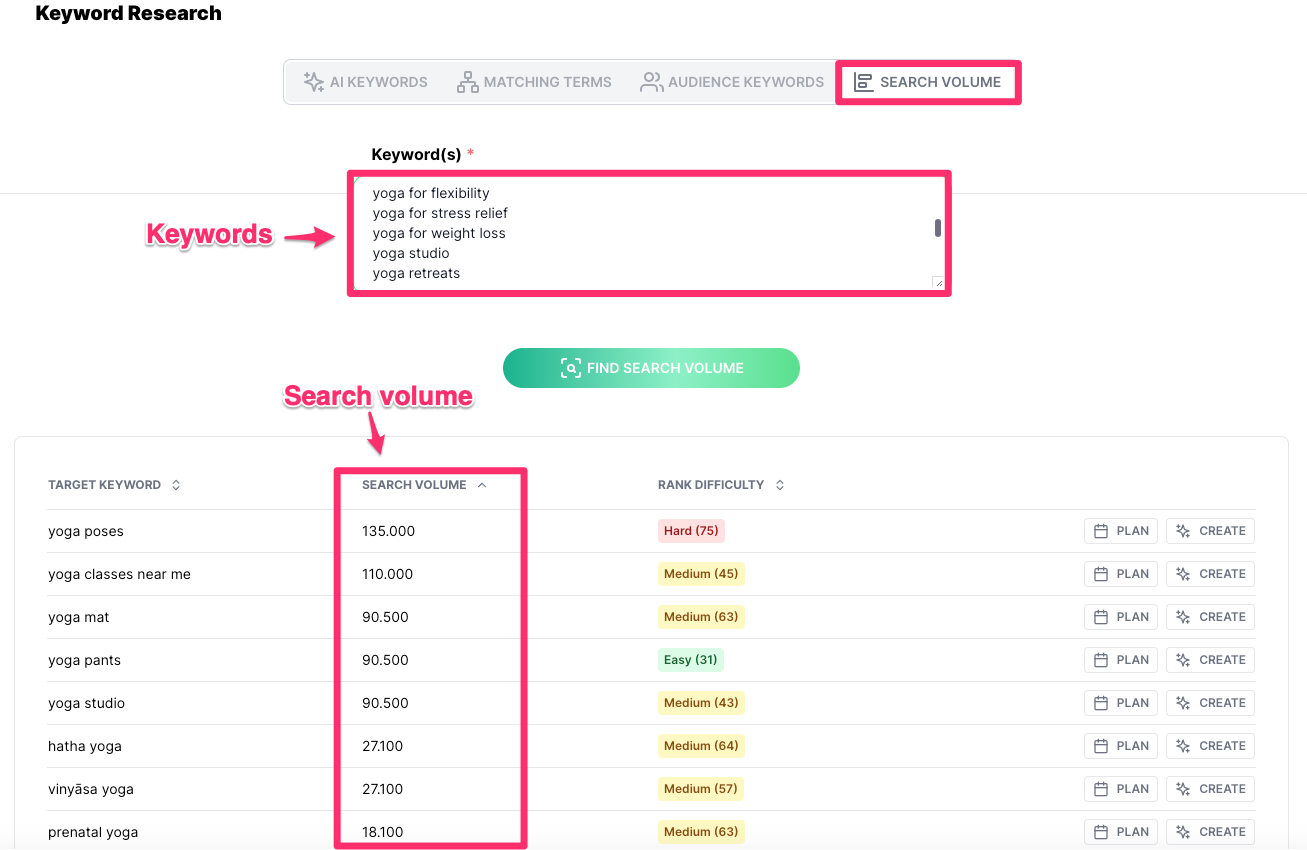
What does the keyword report show?
Here are the data and features you get in the keyword reports:
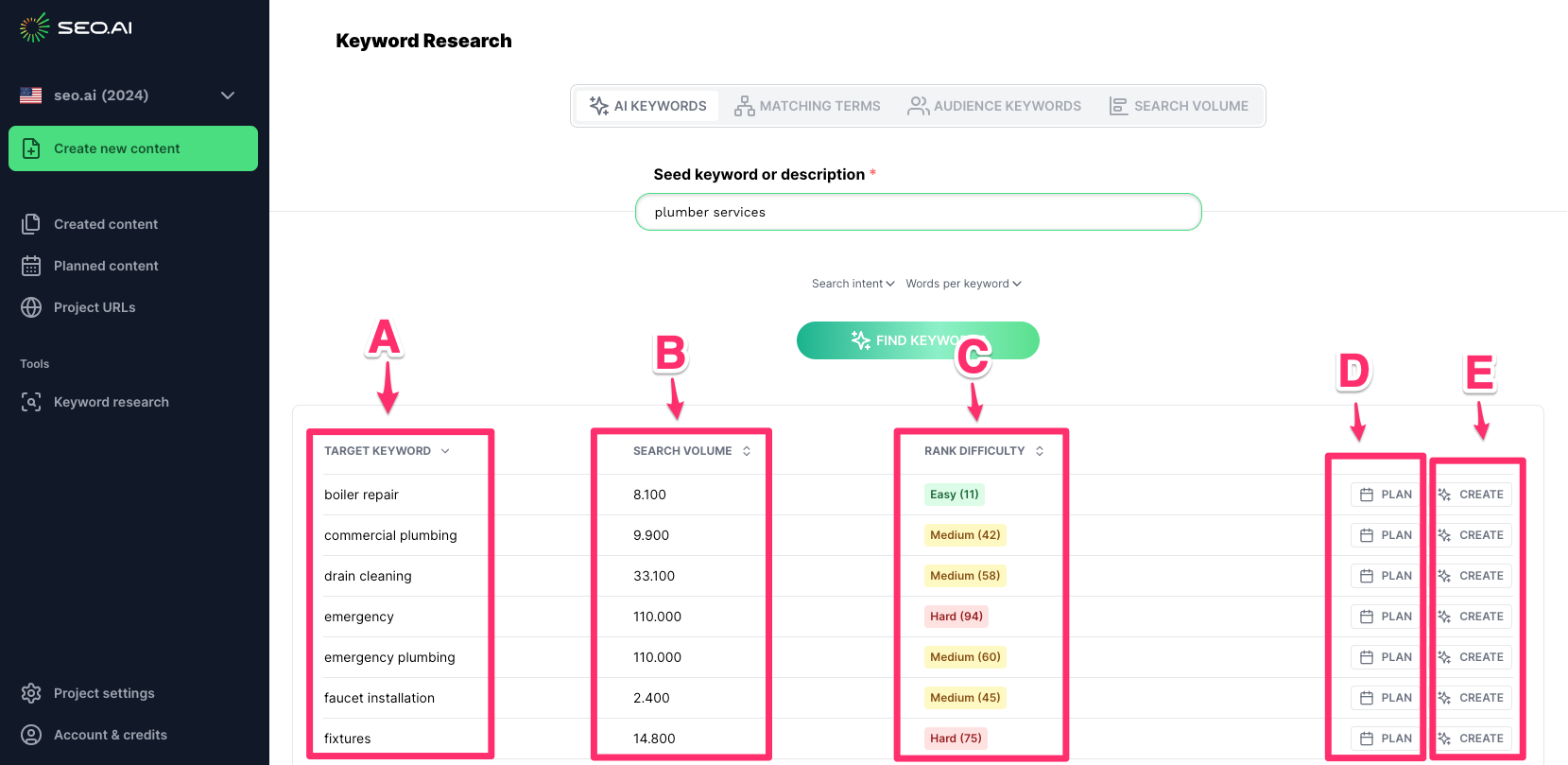
A) Target keyword
The first column shows target keywords. They are the keywords or phrases you want a specific content piece to rank for in search engine results pages (SERPs).
B) Search volume
Search volume refers to the number of times a particular keyword or phrase is searched for on search engines on a monthly basis. The value shown is a monthly average based on the last 12 months taken from the Google Keyword Planner API.
The search volume can vary significantly depending on the keyword and target market. It's important to note that the search volume is based on the target market from your project settings.
C) Rank Difficulty:
Rank Difficulty refers to the level of competition or difficulty in ranking for a specific keyword in search engine results pages (SERPs). The given value is shown on a scale from 1-100, where 1 represents low-rank difficulty and 100 represents high difficulty.
The Rank Difficulty is based on the number of backlinks pointing to the top 10 ranking pages for each target keyword. For example, the keyword "music" has a ranking difficulty of 100. This indicates that that keyword's top 10 ranking pages may have thousands of backlinks, making it highly contested.
D) Plan
After finding the perfect keyword(s) that you wish to focus on, you can choose to create content directly or plan the keyword for later. By clicking "Plan," you will place the keyword in your "Planned Content" tab for later content creation.
E) Create
The "Create" button lets you create content directly from the Keyword Research tab using the desired target keyword.
